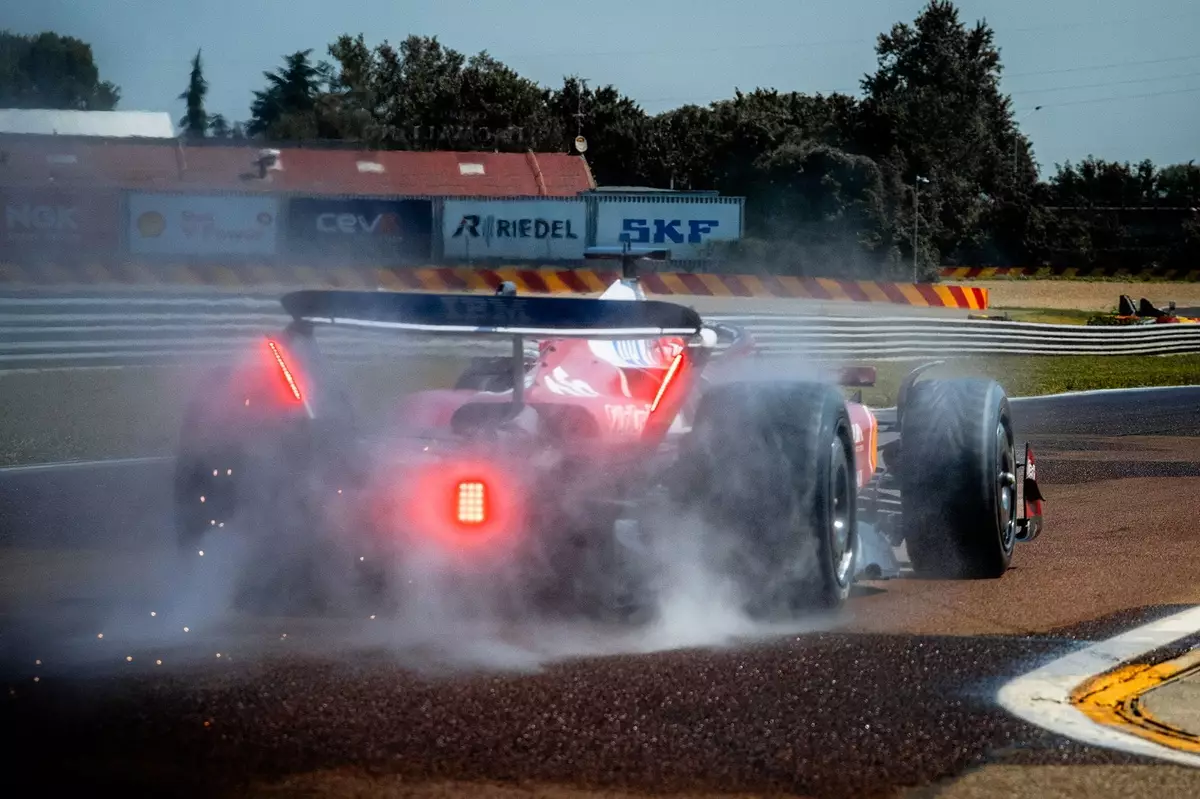In the high-octane world of Formula 1 racing, achieving optimal traction on a track slick with rainwater remains one of the most daunting challenges. Pirelli’s blue-sidewalled ‘wet’ tyres, designed to channel a substantial 85 liters of water per second during peak performance, are a testament to engineering prowess. However, these marvels rarely get the chance to showcase their capabilities as conditions often require a halt in the race; more often than not, they end up spending more time on the sidelines than on the track. The irony? While driving conditions can rapidly shift to torrential rain, teams often find themselves unwilling to risk track position by switching from intermediates to wets, culminating in delays and red flags, such as those witnessed at the infamous Belgian GP in 2021 and more recently in Sao Paulo.
The wet tyres, crafted for specific hydroplaning conditions, have struggled to maintain competitive speeds without overheating and degrading under less-than-ideal circumstances. This inherent limitation has compelled Pirelli to reconsider its strategy for these critical components ahead of the next generation of F1 cars, set to debut in the near future.
Innovation and Anticipation for the Future
Pirelli’s commitment to refining their wet tyre technology is indeed commendable. The name Pirelli evokes a sense of performance durability, a sentiment echoed by their motorsport manager Mario Isola. The ongoing focus to bring the wet tyre’s abilities closer to those of intermediates is a pivot that reflects a deeper understanding of racing dynamics. “Our goal is to have a more usable extreme wet tyre,” Isola stated, emphasizing the importance of transitioning to a functional race tyre instead of one that merely serves during safety car periods.
In pursuit of this vision, Pirelli recently conducted tests at Ferrari’s Fiorano circuit, utilizing a ‘mule car’ to simulate loadings representative of the new era of vehicles. Although innovative, the use of mule cars does raise questions about the fidelity and accuracy of the test results. Inconsistencies in weather and track conditions can dramatically affect performance assessments, posing a challenge that’s as technical as it is logistical.
Navigating the Crossover Point
One of the most critical elements to be addressed in wet weather performance is the ‘crossover point’—the moment when conditions warrant a transition from slicks to intermediates, or from intermediates to wets. This transition is rarely straightforward and requires precise calculation based on lap times. Traditionally, the previous generation of Pirelli wet tyres only became viable when lap times slowed to 120% of the dry pace, revealing just how ineffective they were compared to the keen aspirations of racers.
This season, however, Pirelli has rolled out a new specification of wet tyre that aims to reduce thermal sensitivity and adapt better to variable conditions. The result? A crossover point that nears the target, registering around 118% of the dry lap times. While this is a marked improvement, it still falls short of excellence, showcasing the intricate balancing act that Pirelli must perform in perfecting their tyre lineup.
The Road Ahead: Goals for 2026
Looking ahead to 2026, the Italian automotive giant has set its sights firmly on rectifying the crossover inefficiencies that have plagued wet tyre performance. As Isola noted, aligning the intermediate and wet tyre performances has become a strategic priority. The collaboration with teams like Ferrari, along with insights derived from extensive track testing, indicates a forward-thinking approach that could redefine race strategies during unpredictable weather conditions.
What is at stake here is not just the functioning of a tyre but the very essence of racing. The thrill of Formula 1 hinges on not merely speed or skill but also on how teams adapt to the elements. Striking the right balance between performance and safety in variable weather remains a feat that requires not just engineering excellence but innovative thought leadership. Pirelli’s ongoing commitment to revamping the wet tyre landscape speaks volumes about its adaptability and ambition, setting the stage for a more thrilling and competitive future in Formula 1 racing.


Leave a Reply